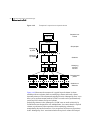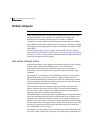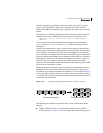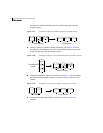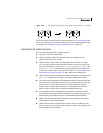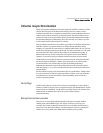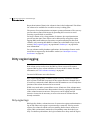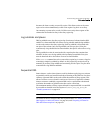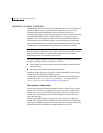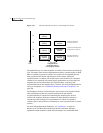
59Understanding Veritas Volume Manager
Volume resynchronization
Volume resynchronization
When storing data redundantly and using mirrored or RAID-5 volumes, VxVM
ensures that all copies of the data match exactly. However, under certain
conditions (usually due to complete system failures), some redundant data on a
volume can become inconsistent or unsynchronized. The mirrored data is not
exactly the same as the original data. Except for normal configuration changes
(such as detaching and reattaching a plex), this can only occur when a system
crashes while data is being written to a volume.
Data is written to the mirrors of a volume in parallel, as is the data and parity in
a RAID-5 volume. If a system crash occurs before all the individual writes
complete, it is possible for some writes to complete while others do not. This can
result in the data becoming unsynchronized. For mirrored volumes, it can cause
two reads from the same region of the volume to return different results, if
different mirrors are used to satisfy the read request. In the case of RAID-5
volumes, it can lead to parity corruption and incorrect data reconstruction.
VxVM needs to ensure that all mirrors contain exactly the same data and that
the data and parity in RAID-5 volumes agree. This process is called volume
resynchronization. For volumes that are part of the disk group that is
automatically imported at boot time (usually aliased as the reserved system-
wide disk group, bootdg), the resynchronization process takes place when the
system reboots.
Not all volumes require resynchronization after a system failure. Volumes that
were never written or that were quiescent (that is, had no active I/O) when the
system failure occurred could not have had outstanding writes and do not
require resynchronization.
Dirty flags
VxVM records when a volume is first written to and marks it as dirty. When a
volume is closed by all processes or stopped cleanly by the administrator, and all
writes have been completed, VxVM removes the dirty flag for the volume. Only
volumes that are marked dirty when the system reboots require
resynchronization.
Resynchronization process
The process of resynchronization depends on the type of volume. RAID-5
volumes that contain RAID-5 logs can “replay” those logs. If no logs are
available, the volume is placed in reconstruct-recovery mode and all parity is
regenerated. For mirrored volumes, resynchronization is done by placing the
volume in recovery mode (also called read-writeback recovery mode).




